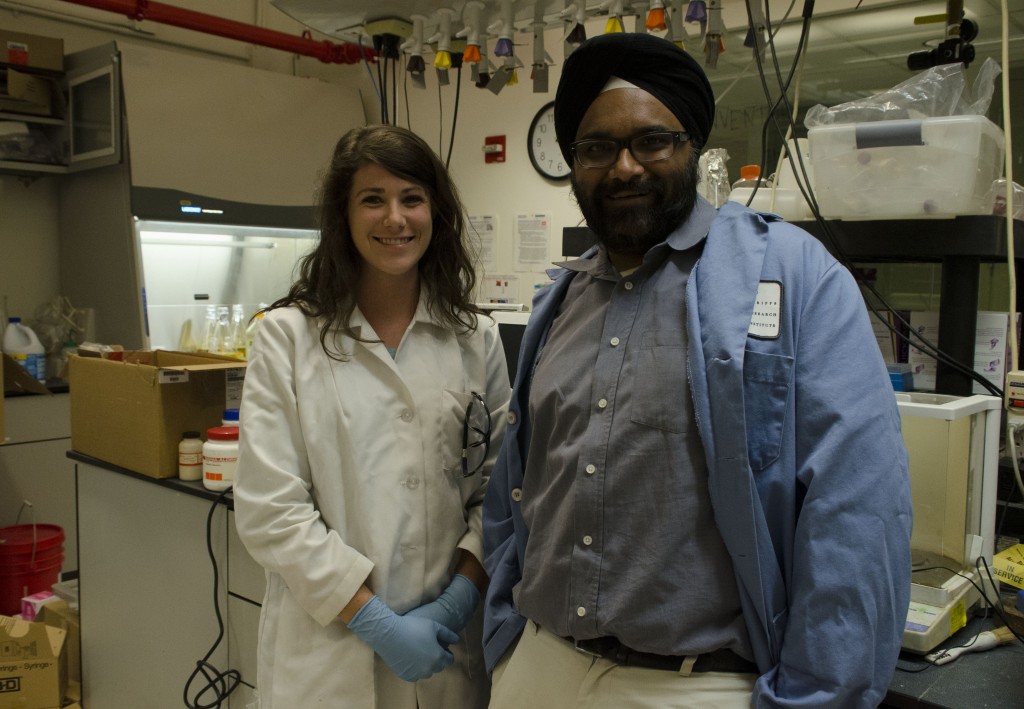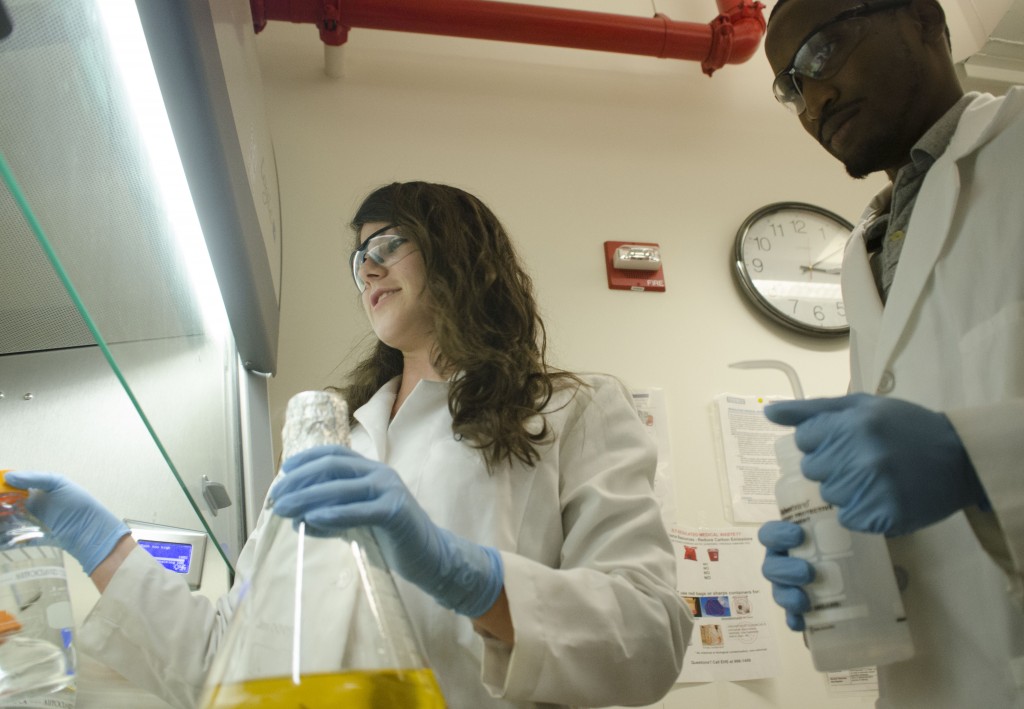
Paramjit Arora
Professor of Chemistry, NYU
Principal Investigator
B.S. Chemistry University of California at Berkeley
Ph.D. Chemistry University of California at Irvine
Postdoctoral Fellow California Institute of Technology
Email: arora@nyu.edu
Professor of Chemistry, NYU
Principal Investigator
B.S. Chemistry University of California at Berkeley
Ph.D. Chemistry University of California at Irvine
Postdoctoral Fellow California Institute of Technology
Email: arora@nyu.edu
The PI was born in New Delhi and raised in the friendly confines of the San Fernando Valley. When not in the lab, he fights battles of good versus evil with Adais.
Professor of Chemistry, NYU
https://www.linkedin.com/in/paramjit-arora-aab4903



Professor of Chemistry, NYU
https://www.linkedin.com/in/paramjit-arora-aab4903
Experience
Education
Experience
Education

Starting session IX, METABOLISM & SYNTHESIS of BIOACTIVE PEPTIDES, Professor Paramjit Arora with New York
University, was introduced as this year's winner of the Makineni
Lectureship Award. This award is significant as it recognizes recent
achievements in peptide research. Professor Arora proceeded with his
lecture, titled "Protein Domain Mimetics as Modulators of
Protein-Protein Interactions."
Starting session IX, METABOLISM & SYNTHESIS of BIOACTIVE PEPTIDES, Professor Paramjit Arora with New York
University, was introduced as this year's winner of the Makineni
Lectureship Award. This award is significant as it recognizes recent
achievements in peptide research. Professor Arora proceeded with his
lecture, titled "Protein Domain Mimetics as Modulators of
Protein-Protein Interactions."

Email: arora@nyu.edu
Phone: 212-998-8470
Office: Brown Building, 29 Washington Place, Room 360
Lab Homepage
Areas of Research/Interest
Bioorganic Chemistry and Chemical Biology
Research Description
Proteins often utilize small folded domains for recognition of other proteins, DNA and RNA. The hypothesis guiding our research is that by mimicking these folded domains we can modulate the function of a particular protein with metabolically stable synthetic molecules. The manifestation of this hypothesis into specific and potent compounds that interfere with chosen targets in cellular and animal systems requires new computational and synthetic approaches. We seek to devise a systematic framework to evaluate and target protein-protein interactions with structured peptidic and nonpeptidic scaffolds designed to reproduce the critical interfacial features of proteins.

Paramjit Arora
Professor of ChemistryEmail: arora@nyu.edu
Phone: 212-998-8470
Office: Brown Building, 29 Washington Place, Room 360
Lab Homepage
Bioorganic Chemistry and Chemical Biology
Research Description
Proteins often utilize small folded domains for recognition of other proteins, DNA and RNA. The hypothesis guiding our research is that by mimicking these folded domains we can modulate the function of a particular protein with metabolically stable synthetic molecules. The manifestation of this hypothesis into specific and potent compounds that interfere with chosen targets in cellular and animal systems requires new computational and synthetic approaches. We seek to devise a systematic framework to evaluate and target protein-protein interactions with structured peptidic and nonpeptidic scaffolds designed to reproduce the critical interfacial features of proteins.
Publications
Lao, B. B.; Drew, K.; Guarracino, D.; Brewer, T.; Heindel, D.; Bonneau, R.; Arora, P. S. “Rational Design of Topographical Helix Mimics as Potent Inhibitors of Protein-Protein Interactions.” J. Am. Chem. Soc. 2014, 136, 7877–7888.
Lao, B. B.; Grishagin, I.; Mesallati, H.; Brewer, T. F.; Olenyuk, B. Z.; Arora, P. S. “In vivo modulation of hypoxia-inducible signaling by topographical helix mimetics.” Proc. Natl. Acad. Sci. U.S.A. 2014, 111, 7531–7536.
Miller, S. E.; Watkins, A. M.; Kallenbach, N. R.; Arora, P. S. “Effects of side chains in helix nucleation differ from helix propagation.” Proc. Natl. Acad. Sci. U.S.A. 2014, 111, 6636-6641.
Kushal, S.; Lao, B. B.; Henchey, L. K.; Dubey, R. Mesallati, H.; Traaseth, N. J.; Olenyuk, B. Z.; Arora, P. S. “Protein Domain Mimetics as In Vivo Modulators of Hypoxia-Inducible Factor Signaling.” Proc. Natl. Acad. Sci. U.S.A. 2013, 110, 15602-15607.
Patgiri, A.; Joy, S. T.; Arora, P. S. “Nucleation Effects in Peptide Foldamers.” J. Am. Chem. Soc. 2012, 134, 11495-11502.
Bullock, B. N.; Jochim, A. L.; Arora, P. S. “Assessing Helical Protein Interfaces for Inhibitor Design.” J. Am. Chem. Soc. 2011, 133, 14220-14223.
Patgiri, A.; Yadav, K.; Arora, P. S.; Bar-Sagi, D. “An Orthosteric Inhibitor of the Ras–Sos Interface.” Nature Chem. Biol. 2011, 7, 585-587.
Jochim, A. L.; Arora P. S. “Systematic Analysis of Helical Protein Interfaces Reveals Targets for Synthetic Inhibitors.” ACS Chem. Biol. 2010, 5, 919-923.
Wang, D.; Liu, J.; Zheng, Q.; Lu, M.; Arora, P. S. “Atomic Structure of a Short Alpha-Helix Stabilized by a Main Chain Hydrogen Bond Surrogate”. J. Am. Chem. Soc. 2008, 130, 4334-4337.
Wang, D.; Lu, M.; Arora, P.S. “Inhibition of HIV-1 Fusion by Hydrogen-Bond Surrogate Based Alpha-Helices.” Angew. Chem. Int. Ed. 2008, 47, 1879-1882.
Lao, B. B.; Drew, K.; Guarracino, D.; Brewer, T.; Heindel, D.; Bonneau, R.; Arora, P. S. “Rational Design of Topographical Helix Mimics as Potent Inhibitors of Protein-Protein Interactions.” J. Am. Chem. Soc. 2014, 136, 7877–7888.
Lao, B. B.; Grishagin, I.; Mesallati, H.; Brewer, T. F.; Olenyuk, B. Z.; Arora, P. S. “In vivo modulation of hypoxia-inducible signaling by topographical helix mimetics.” Proc. Natl. Acad. Sci. U.S.A. 2014, 111, 7531–7536.
Miller, S. E.; Watkins, A. M.; Kallenbach, N. R.; Arora, P. S. “Effects of side chains in helix nucleation differ from helix propagation.” Proc. Natl. Acad. Sci. U.S.A. 2014, 111, 6636-6641.
Kushal, S.; Lao, B. B.; Henchey, L. K.; Dubey, R. Mesallati, H.; Traaseth, N. J.; Olenyuk, B. Z.; Arora, P. S. “Protein Domain Mimetics as In Vivo Modulators of Hypoxia-Inducible Factor Signaling.” Proc. Natl. Acad. Sci. U.S.A. 2013, 110, 15602-15607.
Patgiri, A.; Joy, S. T.; Arora, P. S. “Nucleation Effects in Peptide Foldamers.” J. Am. Chem. Soc. 2012, 134, 11495-11502.
Bullock, B. N.; Jochim, A. L.; Arora, P. S. “Assessing Helical Protein Interfaces for Inhibitor Design.” J. Am. Chem. Soc. 2011, 133, 14220-14223.
Patgiri, A.; Yadav, K.; Arora, P. S.; Bar-Sagi, D. “An Orthosteric Inhibitor of the Ras–Sos Interface.” Nature Chem. Biol. 2011, 7, 585-587.
Jochim, A. L.; Arora P. S. “Systematic Analysis of Helical Protein Interfaces Reveals Targets for Synthetic Inhibitors.” ACS Chem. Biol. 2010, 5, 919-923.
Wang, D.; Liu, J.; Zheng, Q.; Lu, M.; Arora, P. S. “Atomic Structure of a Short Alpha-Helix Stabilized by a Main Chain Hydrogen Bond Surrogate”. J. Am. Chem. Soc. 2008, 130, 4334-4337.
Wang, D.; Lu, M.; Arora, P.S. “Inhibition of HIV-1 Fusion by Hydrogen-Bond Surrogate Based Alpha-Helices.” Angew. Chem. Int. Ed. 2008, 47, 1879-1882.
Fellowships/Honors
American Cancer Society Postdoctoral Fellowship (1999-2002), James D. Watson Investigator Award (2002), Cottrell Scholar Award (2005), Whitehead Fellowship in Biomedical and Biological Sciences (2005-2006), Golden Dozen Teaching Award (2007)
American Cancer Society Postdoctoral Fellowship (1999-2002), James D. Watson Investigator Award (2002), Cottrell Scholar Award (2005), Whitehead Fellowship in Biomedical and Biological Sciences (2005-2006), Golden Dozen Teaching Award (2007)

NYU, USC study finds potential cancer treatment
A collaborative research project between NYU and the
University of Southern California may have made a breakthrough in cancer
treatment. According to a university press release, the research groups
led by NYU chemistry professor Paramjit Arora and USC School of
Pharmacy professor Bogdan Olenyuk have developed a new synthetic
molecule that blocks the expression of genes that lead to tumor
progression.
Their research showed that the synthetic molecule, called
a protein domain mimetic, successfully blocked cell signaling and quic-
kly stemmed cancer growth. The molecule exhibits high potential for the
development of human cancer treatments, after showing low toxicity to
the host body and general compatibility for the host.
Arora said the approach of this project differs from the approaches of other research in drug discovery.
“Typical drugs target enzymes but fail against
protein-protein interactions, which are generally considered to be
‘undruggable,’” Arora said. “The significance of this work is that our
designed compounds inhibit these recalcitrant interactions.”
The next step in the research process is to improve the synthetic molecule’s compatibility to human subjects.

Arora and Olenyuk first met when they
studied together at the California Institute of Technology. Olenyuk is
an expert in the biology and pharmacology of signaling pathways.
Since it began in 2007, this cancer research project has included three NYU graduate students and four USC students.
Brooke Lao, co-lead author on the paper and a doctoral
candidate at NYU, is enthusiastic about the results of the project so
far.
“It is exciting and validating to see the compounds you synthesized make it all the way to an animal study,” Lao said.
Currently, more extensive animal studies are needed
before a timeframe can be determined for clinical trials. However, Lao
states that the ultimate goal of the project would be for the compounds
to become readily available drugs for patients who need them.
For some students studying medicine at NYU, research of
this caliber is a goalpost to work toward in their time at NYU. Pre-med
CAS sophomore Rijul Asri stated that this research indicates NYU’s
instrumental role in research in general.
“One of the main reasons I decided to major in chemistry
here at NYU was the incredible research going on with regards to
biology and medicine,” Asri said. “The work of professors Arora and
Olenyuk is truly inspirational and proves the importance of chemical
research in contemporary medicine. I am really excited to learn more
about the mechanism they devised and to see how it will be applied to
ongoing cancer research.”





No comments:
Post a Comment